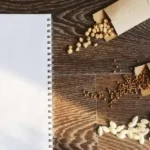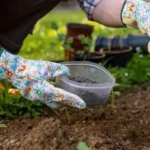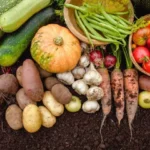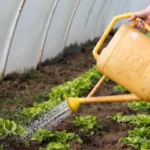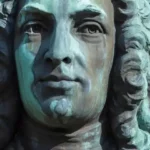If you’re wondering the best time of day for your garden to receive light, good on you for thinking ahead! Undoubtedly, it is a crucial question because the amount of sun exposure and its timing can significantly affect your vegetables’ growth, yields, and subsequent production. But the question remains: does your vegetable garden need morning or afternoon sun?
Although the morning sun is generally cooler and perfect for leafy vegetables like lettuce, fruiting plants often prefer the warmer heat of the afternoon sun. And while sunny afternoons dry soil more rapidly, you can plan your crop layout to add appropriate irrigation and shade where necessary.
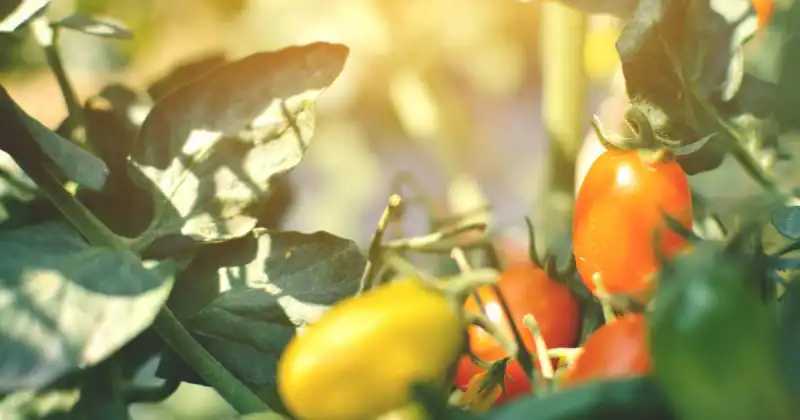
As you plan your vegetable garden, it’s essential to understand how much sun exposure your plants need to flourish throughout their lifecycle. It’s one of the most critical gardening tips new growers can discover and utilize for full, bountiful harvests. And while all plants require light, not every type needs the same amount.
Some vegetables, like tomatoes and peppers, require more direct sunlight, while others, such as leafy greens, prefer partial or filtered sun. Understanding these crucial differences helps you determine where to place each plant in your garden for optimal growth and fuller harvests.
Still curious about how much light your garden needs? We’ve got you covered. In this article, I’ll explain the different types of sunlight and how they affect plant growth and answer some common questions about whether morning or afternoon sun is better for vegetables. Finally, I’ll provide some tips for dealing with less-than-perfect sunny conditions. So, without further ado, let’s get started!
Humble Highlights
- Discover better opportunities to provide your backyard vegetable plants with unparalleled growth so you can determine whether your garden requires morning or afternoon sunlight.
- Save time by discovering these 5 different types of sunlight to determine how much light your foliage friends need to produce larger harvests.
- Discover these 7 unusual and exceptional tips on watering your plants effectively in full sun so you can keep your garden healthy – even during the hottest times of the year!
Is Morning Or Afternoon Sun Better For Vegetable Gardens
Generally, a vegetable garden that receives the morning sun provides cooler temperatures and less intense light than the harsher afternoon sun. Therefore, it’s an ideal place to plant early-season crops or heat-sensitive plants. Additionally, the morning sun helps maintain soil moisture levels by allowing water to penetrate deeper into the soil before it evaporates, creating a more inviting environment for your plants.
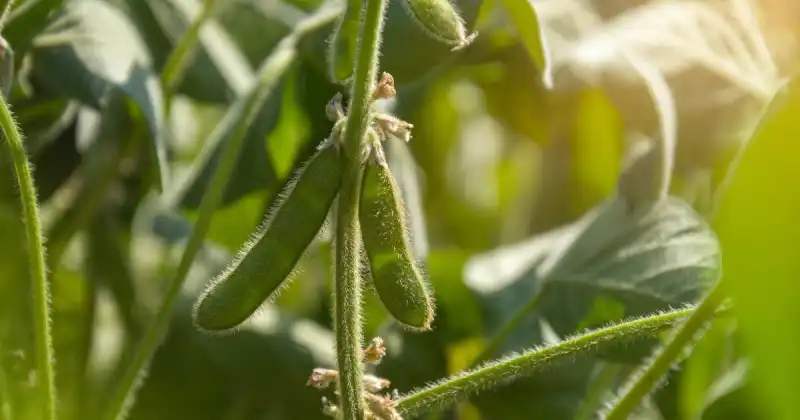
On the other hand, the afternoon sun provides more intense light and higher temperatures, which are great for growing sun-loving vegetables like tomatoes, peppers, squash, and eggplants. These vegetables require at least 6 to 8 hours of sunlight daily to grow properly.
However, too much afternoon sun can also cause damage to plants, especially if you reside in an arid climate. Without a sound watering routine, or if your green friends are exposed to extreme heat for extended periods, issues like stunted growth and plant death may occur. 1
Because every backyard gardener wants to experience the satisfying reward of a flourishing garden, it’s crucial to understand which type of sun exposure is better: morning or afternoon. The answer depends on the variety of plants in your garden and their growth patterns. Remember, morning and afternoon skies offer different shades of sunlight that can affect your vegetables’ growth habits and production.
| Morning Sun | Afternoon Sun |
|---|---|
| Cooler temperatures | Intense light and heat |
| Ideal for early-season crops | Great for growing sun-loving vegetables |
| Helps maintain soil moisture levels | Requires proper watering |
| Provides shade | Can cause plant and leaf damage if not managed properly |
Understanding the different types of sunlight available throughout the day can help you determine which is best suited for the needs of your vegetable garden. Whether you choose morning or afternoon sun depends on several factors, such as early planting schedules, crop rotation preferences, soil moisture requirements, and plant species preference.
By keeping these variables in mind and researching the specific lighting requirements for your plants, you can ensure optimal growth conditions for your beloved produce all year round.
Types Of Sunlight For Gardening
Although most people generally refer to sunlight as “morning light” or “afternoon light,” you can break this down into more specific types when gardening. Different shades of light include:
- Full Sun
- Partial Sun
- Dappled Sun
- Partial Shade
- Full Shade
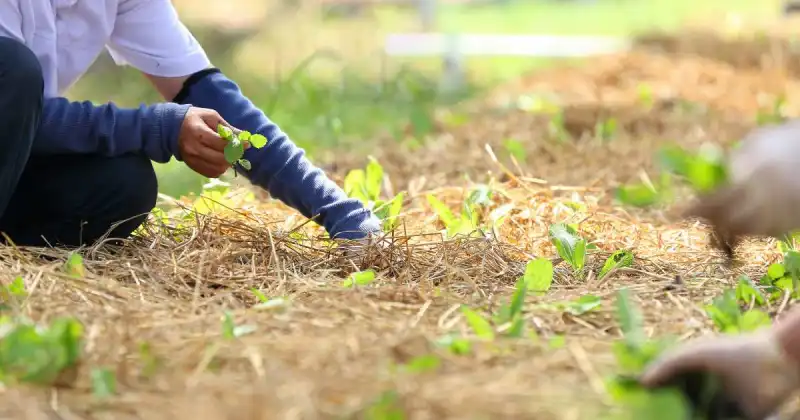
Most plants have particular needs regarding their ideal growing conditions, including nutrients, watering, and sunlight requirements. Although most plants usually do just fine in less-than-perfect situations, they will prosper when provided with the required light.
When purchasing plants or seeds online or from a garden center, they usually come with comprehensive care requirements, including how much light they need and the best light to provide. So let’s look at the different types of sunlight and their qualities. 3
Full Sun
Full sun is obtained from non-shaded areas which enjoy a full day of sunshine. Many plants thrive in full sun and should be well-positioned in open spaces away from hedges, fences, or taller plants that can obstruct the sunlight at certain times of the day.
If your garden space lacks these areas that enjoy a full day of sun, position plants where they can access the stronger afternoon sunlight, or consider growing your plants in containers, which can be transported to the best-lighted areas on your property.
Partial Sun
Plants that like partial sun also enjoy some shaded relief throughout the day, especially mid-day, when sunlight is most intense. Usually, plants that prefer partial sun do best with 6 to 8 hours of sunlight per day but may benefit more from the less severe morning and evening sun.
Take note of where the sun hits your garden throughout the day, as some areas become shaded during the hottest periods, which are ideal for partial sun-loving plants.
Dappled Sun
Dappled sunlight filters through trees and other foliage, creating a pattern of light and shadow on the ground. This type of light is ideal for plants that prefer partial shade, as it provides some protection from the intense heat and light of the full sun.

However, it’s important to note that only a few plants will thrive in dappled sunlight, as most plants require more direct light to grow properly.
Partial Shade
Plants that prefer partial shade still need some direct sunlight (3 to 4 hours) but are happy to remain in the shade for the better part of the day. Many plants and vegetables that prefer partial shade have delicate leaves prone to drying out or scorching in intense sun, which is important to remember if you live in an arid region. 4
Morning sunshine is best for plants that need partial shade as it’s cooler and less intense than the harsh afternoon sun. Also, east-facing gardens are ideal when your goal is to provide partial shade to your foliage.
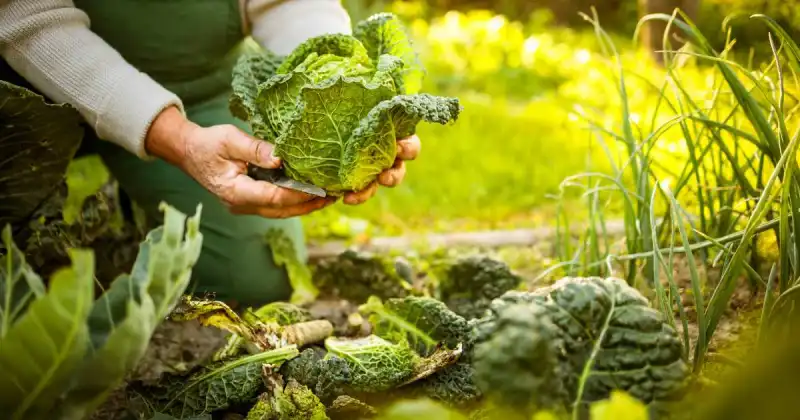
Full Shade
Full-shade plants require the least direct sunlight per day and often benefit from the shade provided by tall trees and thick bushes, or they can even be grown indoors. Full-shade plants require sunlight throughout the day, which can be as little as 2 to 3 hours of indirect light through a window.
Sun exposure is crucial for plant growth and development, affecting photosynthesis and nutrient absorption. Hence, it’s essential to understand the different types of sunlight they require and how it greatly affects their overall health. 5
What Is The Best Direction To Face A Vegetable Garden
In most cases, you’ll want to face your vegetable garden in the direction that receives the most sunlight throughout the day to ensure optimal growth and yields. Still, as we have already established, plants have specific light requirements.
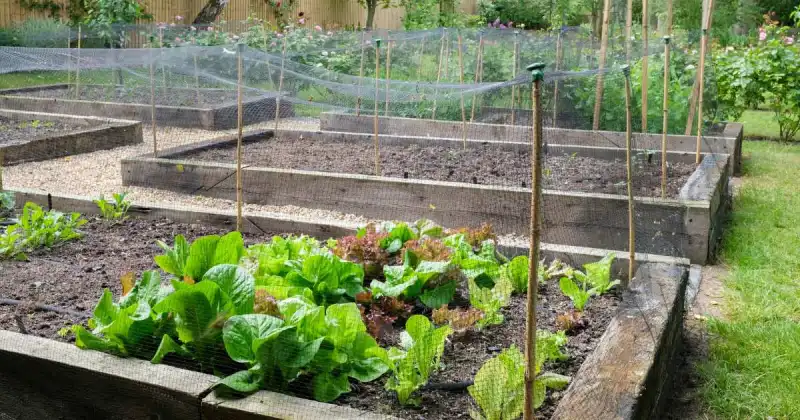
As we all know, the sun changes its position throughout the day, rising in the east and setting in the west. So, a garden that faces north or south receives sun throughout the day. Plants that prefer the lower intensity of the morning sun do best in east-facing gardens, while plants that enjoy strong sunlight and warmer temperatures thrive in west-facing gardens. 6
Although gardens that face north or south typically get the most sunlight, living in the extreme northern or southern hemispheres can alter this slightly. The further north you are, the more the sun favors a southern position and vice versa, especially during autumn and winter.
When choosing the best orientation for your garden, the main things to consider are how much sun your region receives and what type of sun your plants need throughout the day. You’ll also want to determine which garden areas become shaded at specific times.
Optimal Sunlight Orientation
If you live in the northern hemisphere, facing your garden southwards will provide maximum sunlight exposure throughout the day. In contrast, north-facing gardens will receive more sun if you live in the southern hemisphere.
If your vegetables and plants prefer a specific type of sunlight, you can favor an east or west direction, dependent on their needs.
Shade Options
While sunlight is crucial for plant growth, too much can be detrimental. East-facing gardens enjoy the cooler morning sun and become shaded during the heat of the afternoon sun. 7
The video below offers some excellent tips on planning the orientation of your vegetable garden. Remember, choosing well-suited plants for your specific soil type and climate conditions is important for the best chance of seasonal success.
How Much Sun Is Enough For A Vegetable Garden
The optimal growth of your veggies depends on receiving sufficient sunlight throughout the day. Sunlight duration varies depending on the season and location, but most vegetables require at least 6 hours of direct sunlight daily.
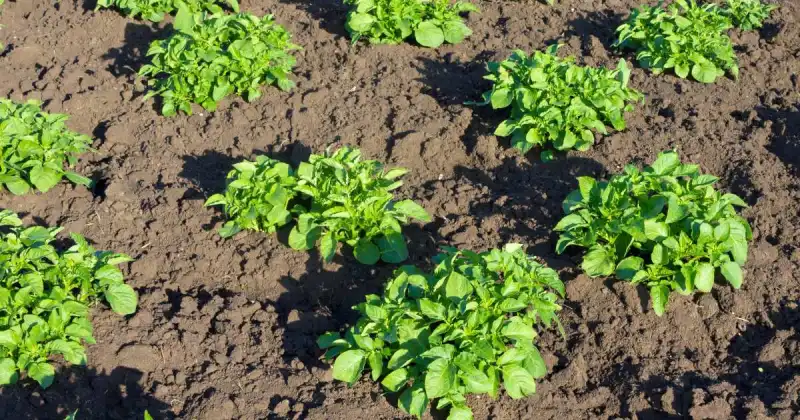
A garden that receives less than 6 hours of daily sunlight may not be suitable for growing vegetables and may only yield substandard results, so consider creating an open space away from buildings, fences, and trees. 8
If your garden is in an area that receives more than 6 hours of direct sunlight a day, consider shade options such as planting taller crops or using a shade cloth to protect your plants from the intense afternoon sun.
In addition to adequate sunlight duration, the soil should be kept moist, or you risk drying your veggies. Too much or too little water can hinder plant growth and reduce yields, so keeping the soil covered with mulch, like wood chips or compost, insulates delicate roots, regulates soil temperature, and keeps your plants happy.
Considering these factors, you can ensure that your vegetable garden receives the optimal amount of sun and moisture needed for a successful harvest.
| Plant Type | Direct Sunlight | Partial Shade | Full Shade |
|---|---|---|---|
| Leafy Greens | 4-6 Hours | 3-4 Hours | Under 3 Hours |
| Root Vegetables | 5-7 Hours | 4-5 Hours | Under 4 Hours |
| Fruiting Vegetables (Tomatoes, Peppers) | 6-8+ Hours | 5+ Hours | Under 2 Hours |
| Fruits (Grapes, Apples, Melons) | 6-8+ Hours | 5+ Hours | Under 2 Hours |
| Herbs | 5+Hours | Under 5 Hours | N/A |
Use this table as a guide when selecting which plants will do best at different levels of sun exposure. Remember that some partial shade may be beneficial during hot summer months or in areas with intense afternoon sun exposure.
Can A Vegetable Garden Get Too Much Sun
Excessive sunlight can be detrimental to your crop in a vegetable garden. While plants need sunlight to grow, too much sun exposure can stunt their growth and cause damage to the soil, leading to poor growth, loss of essential nutrients, dehydration, and even plant death.

If you reside in an arid climate with high summer temperatures, providing your foliage with adequate shade and irrigation options for your vegetable garden is vital. Use cloth or netting to create shaded areas for your plants during the hottest parts of the day, or plant taller crops that will block the sun when it’s strongest and most intense. 9
Correct watering techniques can play a crucial role in maintaining healthy soil and plant growth. Although you’ll need to hydrate your garden relative to your region and temperature conditions, consider watering deeply but infrequently to keep moisture in the ground without over-saturating it, which could further damage your crops.
Although growing a self-sustaining vegetable garden in hot climates is difficult, many obstacles can be overcome. Still, the most important is to recognize when the heat is having an adverse effect on your veggies and amend the situation accordingly.
How Hot Is Too Hot For A Vegetable Garden
Hotter temperatures can lead to problems for your veggies. When the weather gets too hot, your vegetables may struggle, and the soil becomes cracked, causing plants to dehydrate, wilt, burn, and die if not swiftly addressed.
Although it’s difficult to provide an exact temperature that is too hot for a vegetable garden and the various plants growing within, it’s essential to recognize the signs of heat damage and how to take preventative measures.
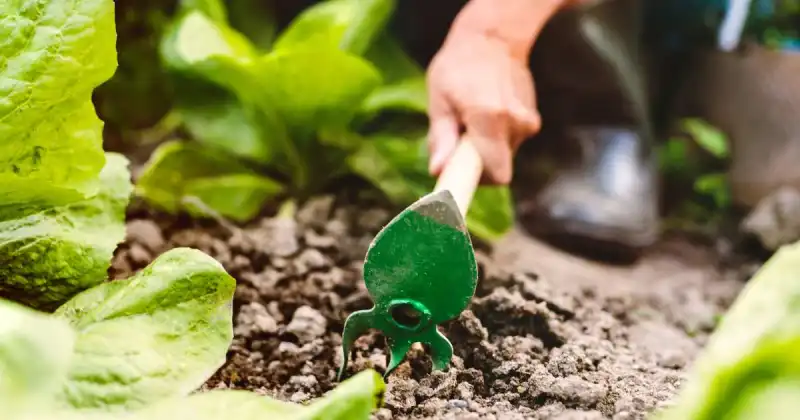
Some obvious signs that the heat is too strong for your plants are:
- The soil becomes hard, dry, and cracked.
- Leaves begin to dry out, wilt, and drop off.
- Discolored (browning or yellowing) foliage signals plant burning.
- Stems and shoots start to sag as moisture evaporates.
Fortunately, using shade covers is one of the best ways to protect your vegetables from excessive heat. You can use different options such as floating row covers or shade cloth. These materials can help reduce the direct sunlight that hits the plants while allowing enough light for photosynthesis.
During sweltering weather, it’s best to water a vegetable garden early in the morning when temperatures are cooler. Watering at this time helps prevent evaporation and ensures your plants get enough moisture throughout the day.
These measures allow you to care for vegetables during heatwaves and avoid common heat-related vegetable problems such as wilting and discoloration.
Should You Water A Vegetable Garden In Hot Sun
While keeping your vegetable garden hydrated in scorching temperatures is important, correct watering techniques should be used. Otherwise, you risk harming your plants and vegetables.
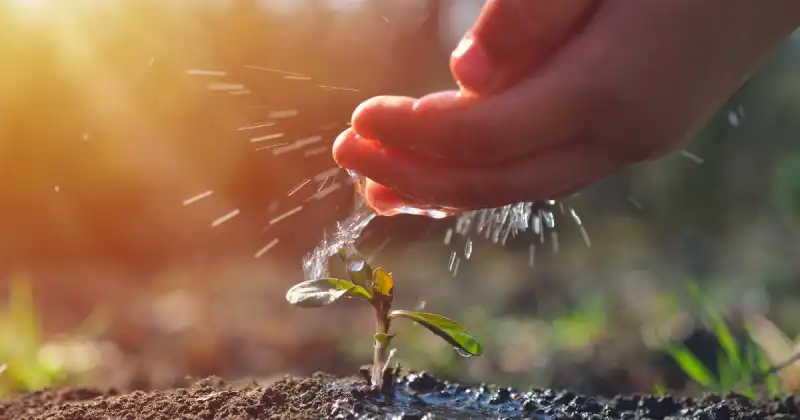
Here are 7 tips to help you effectively manage watering in hot weather and keep your plants healthy.
1. Water deeply and infrequently. Frequent shallow watering can lead to the development of surface roots becoming more susceptible to drought. Deep watering encourages root growth and helps plants establish greater drought resistance. 10
2. Choose your watering method. Today, more options are available than ever to provide a drink to your crops, including drip irrigation and soaker hoses for efficient watering.
3. Mulching. Wood chips, straw, and compost are three popular and effective mulches growers enjoy using in their gardens to provide cover and conserve moisture.
4. Time your watering. The best time to water is early morning when temperatures are cooler and evaporation rates are lower. Although some growers say dusk is another good time to water, I caution against this. This is especially true during warm weather spells, as standing water, with no means of evaporation, may lead to the proliferation of fungal diseases that may arise among your plants.
5. Avoid watering during the hottest part of the day. When the sun is most intense, watering during the middle of the day may cause water droplets to act as mini magnifying glasses, burning leaves.
6. Monitor soil moisture. Invest a few dollars in a soil moisture meter for precise results, or stick your finger into the soil to the second knuckle to determine if it’s time to water again.
7. Water accordingly. Install a rain gauge or use a rain sensor on automated sprinkler systems that adjust watering based on rainfall amounts.
These practices can effectively manage heat stress and maintain healthy plants during hot summer.
Should You Shade Your Vegetable Garden
There are several effective ways to shade your most delicate plants and vegetables, allowing other plants to enjoy strong sunlight.
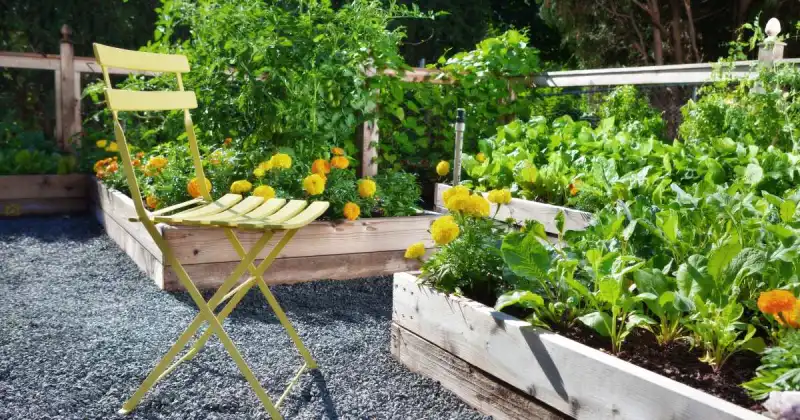
If you have a north or south-facing garden in a warm and sunny location, adding some shady areas for your plants and vegetables may be necessary. Adequate shade can prevent plant burning while reducing heat stress.
How To Shade Your Vegetable Garden
While facing a garden away from the strong afternoon sun is not always possible, adding shade can be a game-changer for keeping the plants in your vegetable garden cool and healthy. 11
The most common methods to add shade to your vegetable garden include using shade cloth, trellis options, or planting certain companion plants that provide natural shading.
When considering adding shade to your vegetable garden, it’s important to understand the various options available. The following table briefly overviews some popular methods used by beginning and seasoned growers alike.
| Method | Description | Pros |
|---|---|---|
| Shade Cloth | A fabric cover that filters sunlight and reduces heat stress on plants. | Easy to install and remove; customizable for different levels of shading. |
| Trellis Options | Structures such as arbors or pergolas provide overhead shading while also serving as supports for climbing vegetables like beans or cucumbers. | Can add visual interest to the garden; multi-functional use. |
| Companion Planting | Planting taller crops next to shorter ones so they can provide natural shading from their leaves or canopy growth. | Encourages biodiversity in the garden; helps prevent soil erosion |
| Use Solid Structures, bushes, or trees. | Plant delicate crops close to sheds, fences, bushes, or trees that cast a shadow in the afternoon. | Using existing shady areas is cheaper than erecting your own. |
It’s important to remember that all of these options provide adequate sun protection when needed, so you can allow morning and afternoon sun to enter your garden without worry.
What Are Gardening Zones
Gardening zones are a way to classify regions according to their climate conditions and help gardeners choose plants that can survive and thrive in their specific area. Choosing which direction to face your garden for good morning and afternoon sun levels also requires some thought for the colder winter temperatures.
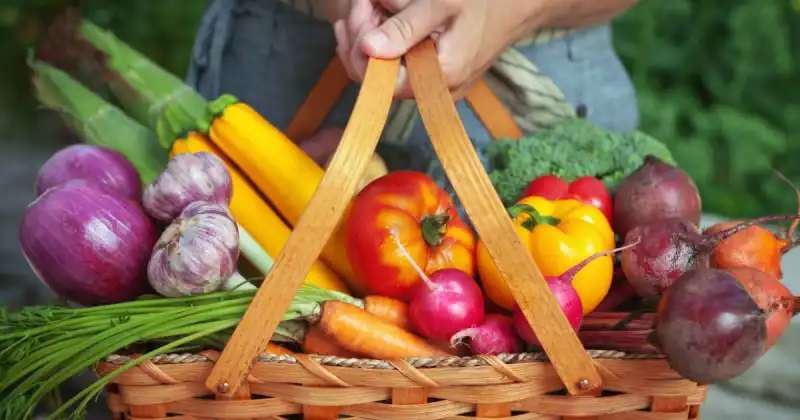
To determine which plants best suit your garden, familiarize yourself with the different gardening zones assigned by the United States Department Of Agriculture (USDA) based on minimum winter temperatures and other factors such as native plant species and average precipitation. 12
Here are some key points to keep in mind when considering gardening zones:
- Plant hardiness: Each zone is classified according to its minimum winter temperature range, divided into 10-degree increments, and broken down into two additional segments representing 5-degree increments.
- Soil types: Different soil types can affect how well certain plants grow in a given region. Understanding your soil type, pH level, and nutrient content can help you select plants that will do well in your garden.
- Microclimates: Even within a single gardening zone, microclimates can result from terrain variations or sunlight exposure. These microclimates could provide an opportunity to grow plants that might not typically do well in your growing zone.
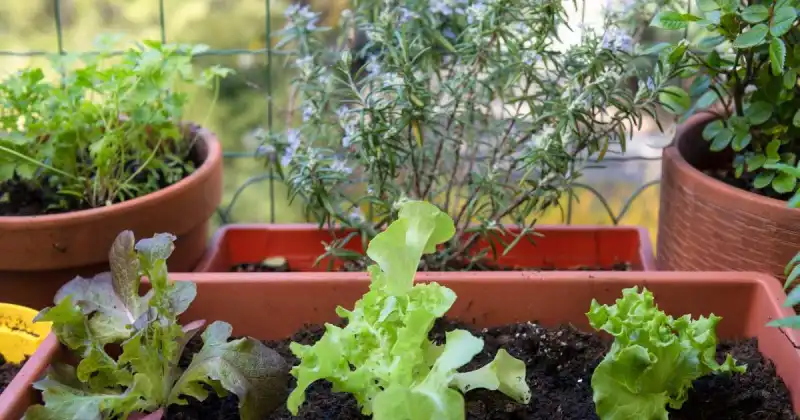
By considering these factors when planting in sunny or shady areas, you can increase your chances of success and create a thriving vegetable patch. While gardening zones provide valuable information about which plants work best for your site, they’re just one tool among many at your disposal when planning a garden.
Conclusion
Now that you understand the impact of sunlight on your vegetable garden, it’s time to make some decisions. Remember, various plants have different requirements for sunlight, so knowing what type of light your plants need can make a huge difference in their overall health.
When selecting a location for your vegetable garden, consider the direction your green space faces and whether it will receive enough sunlight throughout the day.
Because plants have varying light requirements, it’s crucial to do some research before selecting which vegetables to plant. To determine how much sun your vegetable garden will receive, use a gardening zone map, a mobile app like Sun Seeker, or a vegetable sunlight chart as references.
Remember that too much sun can be as harmful as too little, so monitor your plants regularly and provide requisite shade if necessary during hot summer days.
Whether morning or afternoon sun is better depends on the specific needs of your plants and where they are located in your garden. By closely researching and monitoring your plants, you can ensure they receive the optimal sunlight for healthy growth.
What plants in your garden enjoy morning and afternoon sun? Comment below and extend a helpful green thumb to your fellow gardeners by detailing what grows best in your neck of the woods!
SOURCES
- Michigan State University, Extension – Choosing A Smart Site For Your Vegetable Garden
- Washington State University, Extension – Using Crop Rotation In Home Vegetable Gardens
- Cornell University, College Of Agriculture And Life Sciences – Sunlight: The Key To Great Vegetables
- North Carolina State University, Extension – How Much Sunlight For A Vegetable Garden?
- Almanac – Vegetables To Grow In The Shade
- Nola.com – Vegetable Rows: North To South Or East To West?
- Ohio State University – Summer Season Extension Using Shade Fabric For Cool Weather Crops
- North Carolina State University, Extension – 16. Vegetable Gardening
- UC Master Gardener Program Of Contra Costa County – In The Vegetable Garden When Is Full Sun Too Much?
- University Of Georgia, Extension – Conserving Water In The Vegetable Garden
- Utah State University – Using Shade For Fruit And Vegetable Production
- The National Gardening Association – USDA Plant Hardiness Zone Map

